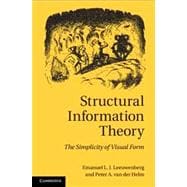
Note: Supplemental materials are not guaranteed with Rental or Used book purchases.
Purchase Benefits
What is included with this book?
| Introduction | |
| Towards a Theory of Visual Form | |
| Borders of perception | |
| Attributes of visual form | |
| Process and representation | |
| Models and principles | |
| Assumptions and foundations | |
| Applications to Visual Form | |
| Formal coding model | |
| A perceptual coding manual | |
| Preference effects | |
| Time effects | |
| Hierarchy effects | |
| Extensions | |
| Perception beyond SIT | |
| SIT beyond perception | |
| Overview | |
| Conclusion | |
| Table of Contents provided by Publisher. All Rights Reserved. |
The New copy of this book will include any supplemental materials advertised. Please check the title of the book to determine if it should include any access cards, study guides, lab manuals, CDs, etc.
The Used, Rental and eBook copies of this book are not guaranteed to include any supplemental materials. Typically, only the book itself is included. This is true even if the title states it includes any access cards, study guides, lab manuals, CDs, etc.